Lithops, these succulents that look like smooth pebbles, so much that they have even been nicknamed ‘living stones’. If there are other stones lying around on the ground where they are growing, you might not be able to tell the difference at first glance and try to pick one up.
Native to southern Africa, Lithops is a genus of succulent plants in the ice plant family, Aizoaceae. The name originates from the Ancient Greek words λίθος (líthos) meaning ‘stone’ and ὄψ (óps) which stands for ‘face’, alluding to the plant’s striking resemblance to stones.
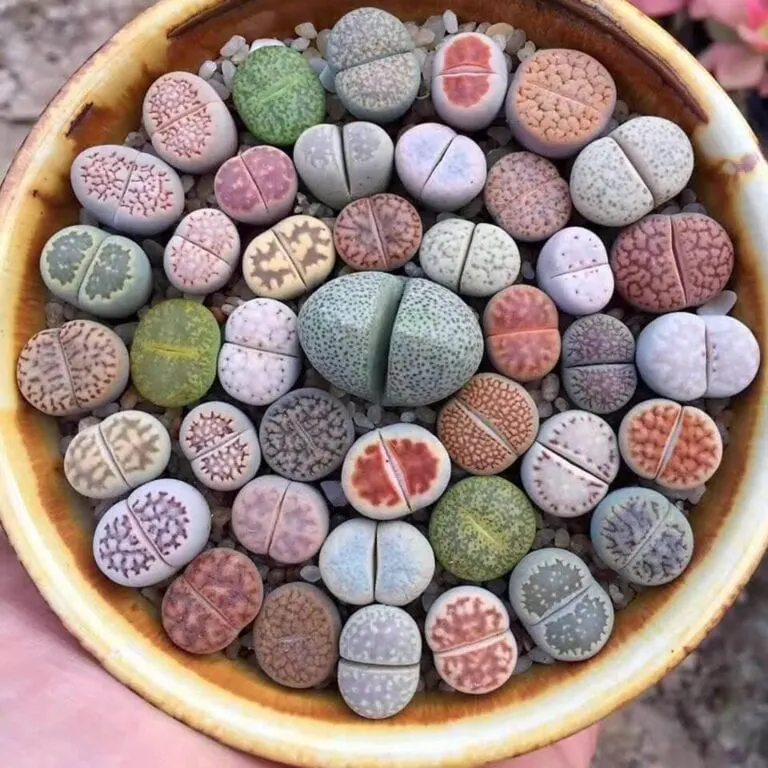
In the wild, Lithops grow in the arid, hot plains of the South African desert, where some regions even receive less than 4 inches of rain a year. They thrive in compacted, sandy soil with little water and scorching temperatures. This also explains their very unusual appearance, which plays a role in water conservation. Their adaption to imitate the appearance of stones surrounding them prevents them from being eaten by grazing animals, while they also produce flowers that attract bees and other pollinators.


Sometimes also called ‘pebble plants’, ‘flowering stones’ or ‘mimicry plants’, these uncommon succulents do indeed look like a bunch of colorful stones lying on the ground, as they seem to almost have no stem, with bulbous fused leaves that emerge from the soil. Taking a closer look, you can see a slit on the leaves’ surfaces, from where a single flower will sprout in the spring and summer, and also new leaves appear.
The flowers look like daisies, and they exist in shades of yellow, white and orange. Same as shamrocks, the flowers open early on sunny days, and then close later in the day. If Lithops are grown in clusters, the blossoms create a lovely formation that cover the whole plant, hiding the stone-like part underneath them.
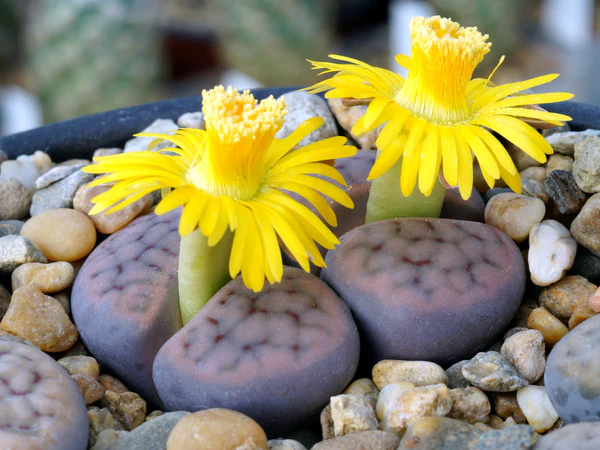

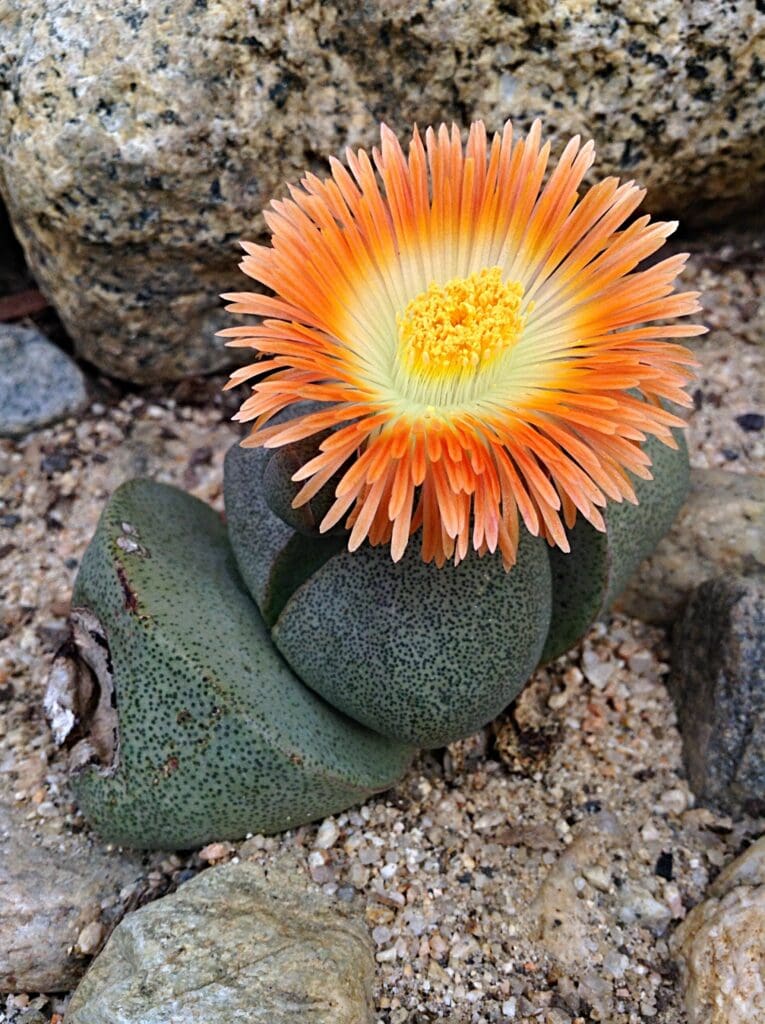
Lithops grow extremely slow, rarely reaching more than 1 inch (2.5 cm) above the soil surface. Most of the succulent’s leaves are in fact buried below the ground, and apart from the fissure separating them, they also have small, partially or totally translucent windows (small holes on top of the leaves) that allow light to penetrate the interior of the leaves for photosynthesis. Since the padded leaves resemble the hoofs of ungulates, more precisely the cleft in the animal’s foot, they are often referred to as “cattle hooves” or “sheep hooves” by locals in Namibia.
Read also: 7 Best Carnivorous Houseplants | Indoor Easy Care Carnivorous Plants

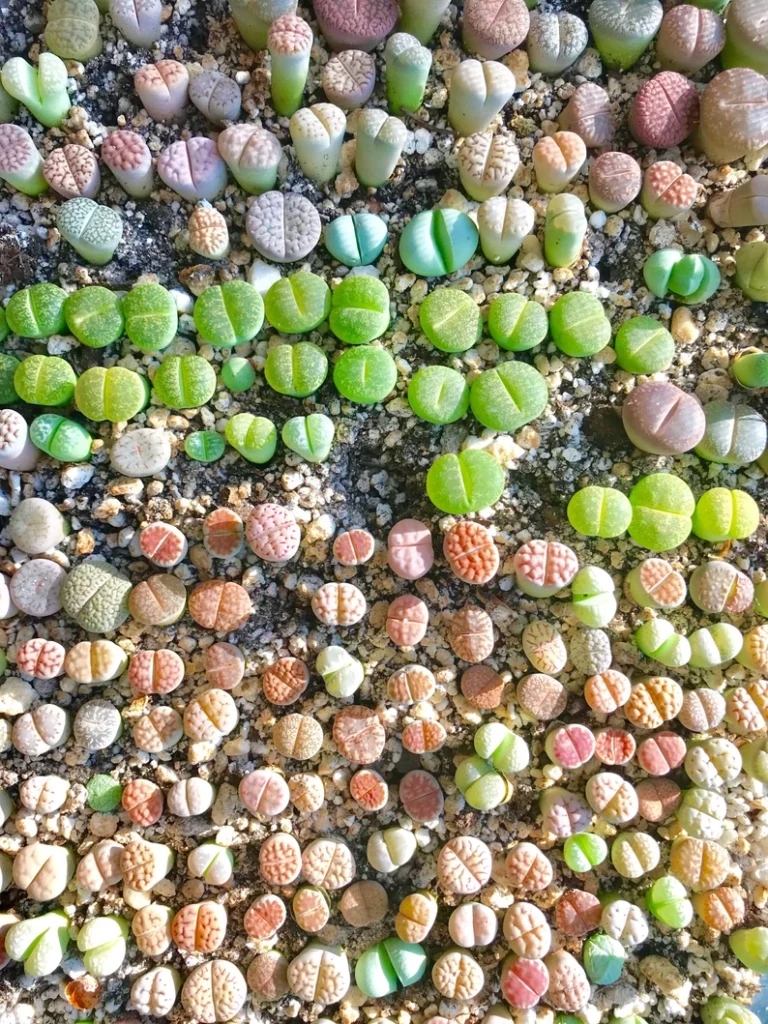
Lithops exist in nearly 150 different varieties, and they are striking not only due to their intriguing appearance, but also because they come in a range of colors and patterns, from light gray, deep red, green, brown, yellow to orange, cream, and pink. Some species also have mottled or striped marks, making them even more beautiful. The markings and leaf color of each species and variety is determined by the environment in which it developed, or if the variety was bred through cross-pollination.

One important factor to remember when cultivating Lithops is about their growth cycle. Since lithops have only one pair of leaves at a time, the old leaves wither and die, leaving room for new growth, and this usually happens after the blooming period. In their native environment, these succulents have two periods of dormancy.

After they bloom, the succulent undergoes a dormant period for a while to prepare for new leaves. These new leaves emerge in spring and the summer soil dries out, and at this time lithops stop growing and enter a dormant state throughout the hottest time of the year. Nutrients from old leaves are absorbed and new pairs of leaves appear from the slit which contains the meristem.
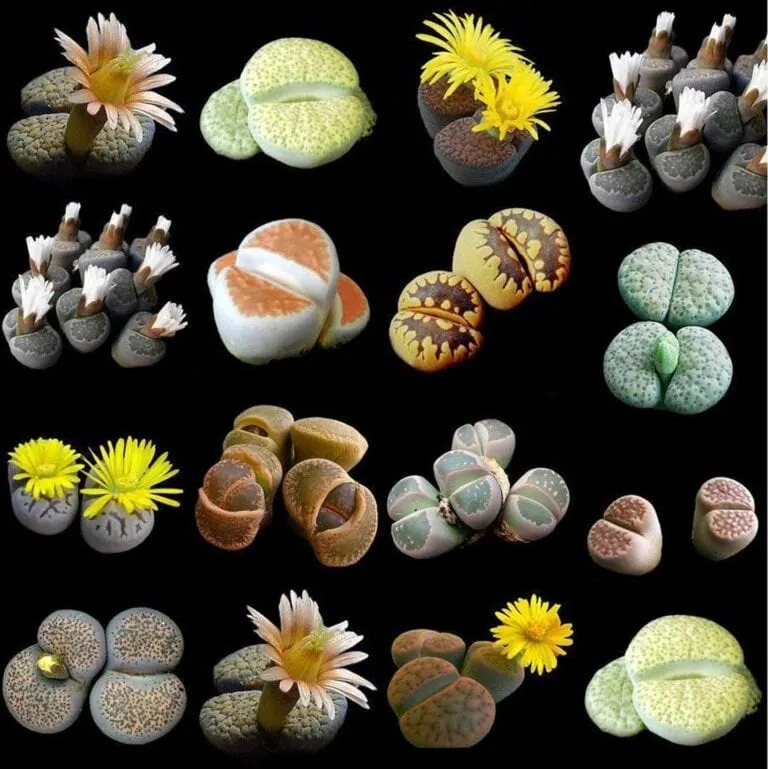
So, it is important to take this into consideration when growing Lithops, to allow the plant to dry out in the summer as it would have occurred in its natural habitat. The second dormancy period takes place after the autumn flowering cycle is over. Over the winter months, the plants slow down again and stop growing. Therefore, there should be almost no watering during winter as well.

It can happen that Lithops grow their new leaves without flowering, and one way to know if they are growing is to check the leaves. If they feel squishy and soft to the touch, then it is an indication that the outer leaves will probably shed. New leaves may emerge after a few days, otherwise it could just be due to underwatering. But allow the old leaves to completely wither during this period, and do not water your Lithops.
Read also: 14 Intriguing Orchid Species That Look Like Something Entirely Different

Lithops, like all succulents, are well adapted to conserve water, except that they are even better at doing so. These plants hardly drink at all, and when they do so, it is a very small amount. They survive mainly by absorbing moisture from mist or fog a few times during the year, as some wild Lithops in fact never receive any rainfall. Having some of the most fascinating structure, Lithops don’t really have a stem, but they have a much larger root that can reach up to 6 in. Therefore, when growing these, a deep pot may be more appropriate.
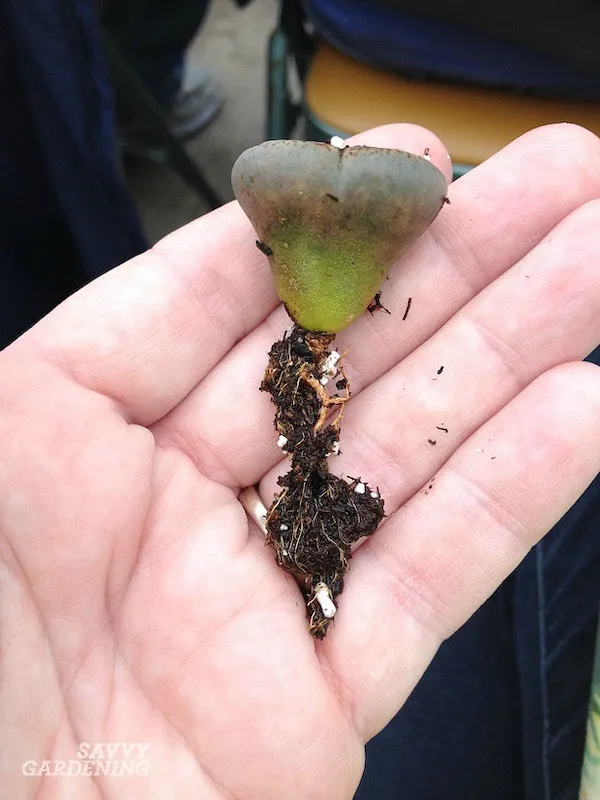
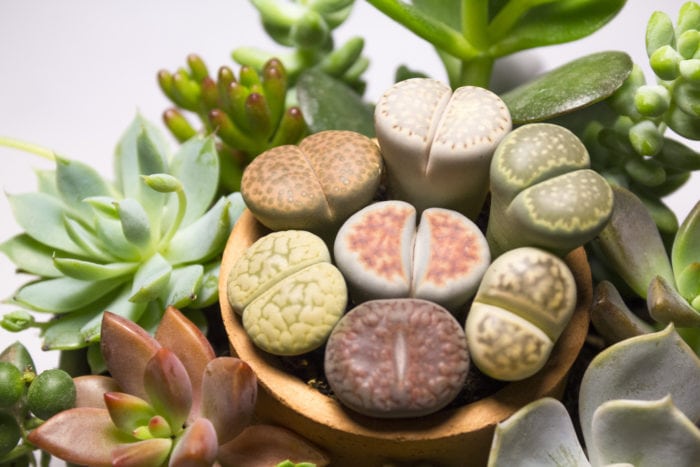
Lithops in general require minimal care, but they do need some special growing techniques to thrive. So, even if you are a busy bee, or you don’t have a green thumb, they are relatively easy to care for.
Here are some helpful tips when growing Lithops:
1. Light Requirements
Lithops would need to be provided with 5 to 6 hours of direct sunlight a day, and partial shade in the afternoon. Although their adaptation to tolerate harsh sunlight in their natural environment is remarkable, intense heat can still damage their foliage and cause sunburn. So, make sure to move them to a more shady area in the summer afternoon or cover them up if their containers absorb too much heat. A south or east window is an ideal spot for the plant. However, bear in mind that insufficient sunlight can result in elongated leaves and lost patterns.
If Lithops are kept outdoors in the summer, they should remain in a sunny spot but under a cover, for example, under the eaves of the house to protect them from rainwater. They should be kept dormant and dry during the summer months, and only watered a small amount (1 or 2 tablespoons of water) if the leaves show some signs of shrivelling.


2. Temperature
Lithops mostly thrive in climatic conditions with temperatures ranging from 65 to 80 degrees Fahrenheit, although they withstand up to 90 to 100 degrees Fahrenheit. As well, the succulent should be protected from freezing temperatures, as it has a tendency to rot easily. So, it is better to bring them indoors if the temperature starts dropping below 40 degrees.

3. When to water Lithops
Lithops have the capacity to store water for months in their leaves, so watering them at the wrong time while they are growing can be detrimental to the plant.
Summer
The plant is not to be watered during summer as they are dormant during this period. The only exception is if they become wrinkled, then only add a very small amount of water and this will help to make them plump again within a week.

Autumn
The frequency of watering can be start again when Lithops resume growth in autumn. Look out for the first sign of flowering, when a bud is trying to emerge from between the leaves. At this stage, they will require the most water, so full watering can be provided, almost drenching the plant. However, do check whether the soil is still damp from the last watering before giving any more water to the plant.

Winter
During winter, the plants should be kept almost completely dry, otherwise this could be harmful to them. This is the period of time when the old leaves start to die and new ones begin to form inside, absorbing water from the old ones. After a while, the old leaves will appear withered, as the new pair inside is growing steadily. If the plant is watered, the old leaves will absorb the water, and this can eventually compromise the plant’s growth, resulting in the death of both sets of leaves.
Read also: How to Grow Carnivorous Plants at Home
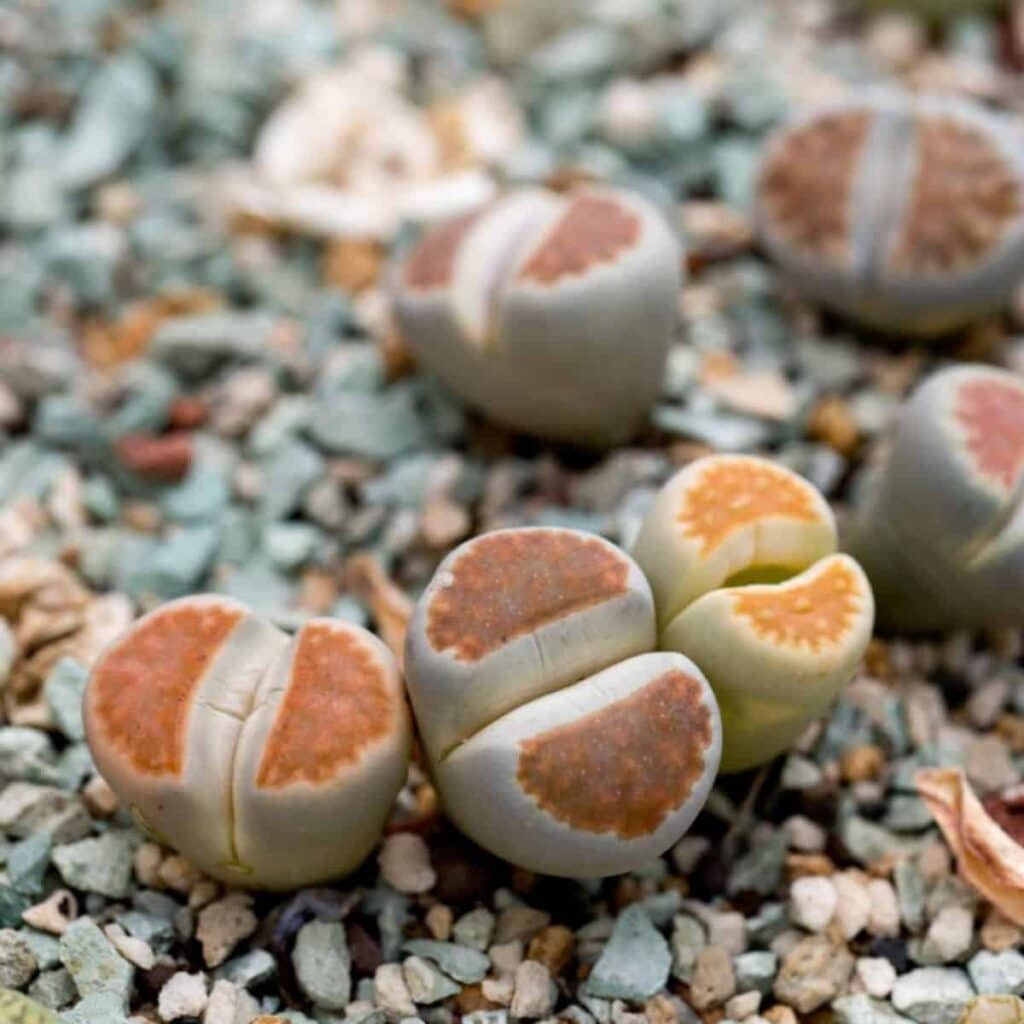
Spring
At this time, the leaves would have shriveled up into paper-like husks, and they can be removed. The plant splits open, revealing the new set of leaves. This is when the watering can resume, by providing a small amount every 10 to 14 days to encourage growth of the new buds, and then gradually increase it to full watering as required. In the heat of summer, watering needs to be slowed down as the succulent has reached its second dormancy.
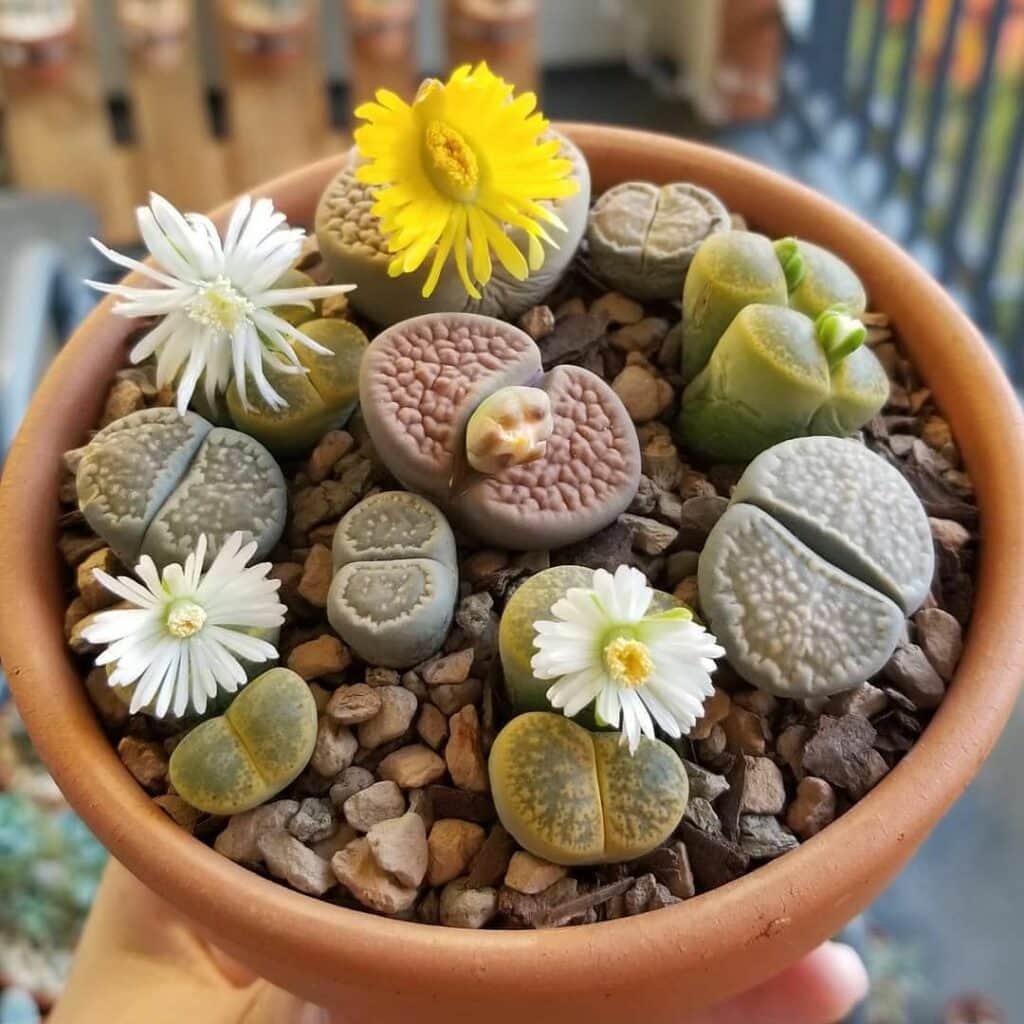
Apart from this watering schedule detailed above, you can determine whether your Lithops need water by closely monitoring their condition. If the plant appears wrinkled or puckered, or seems like it has sunk deeper into the pot and feels softer than usual, then it’s time to provide some water.
4. Soil and Fertilizer
Lithops are best planted in pots for most zones, using cactus mix or a sandy potting medium with fast drainage. Sand, pebbles, pumice and other gritty materials can be added for the drainage. Make sure that the soil does not contain too much moisture, otherwise the plant will rot.

As for fertilization, there is no real need for it, since Lithops are accustomed to thrive in ‘lean’ soils with very few nutrients. However, it can be fed just before the normal blooming season to encourage the succulent to develop flowers. For this, you will require a small amount of heavily diluted cactus fertilizer that is low nitrogen and high in potassium to be given during spring. But, ensure that the fertilizer is not spread directly onto the leaves as this may cause burn or damage.


An interesting fact about Lithops is that they are considered non-toxic to humans and pets. Actually, it has even been reported that kids in Africa even eat these plants as a way to quench their thirst. However, as a note of caution, it is best to keep them out of reach of small children and pets, if the plants have been sprayed with chemicals or pesticides and thus will be poisonous.
Read more articles:
- Silent Killers of the Sea: Fishing Nets and the Devastating Impact on Our Oceans
- Amazing Ability of Sharks to Regrow Their Dorsal Fins
- Mountain Marvels: 7 Architectural Wonders Built into Nature’s Slopes
- The Frilled Shark: Jaws of the Abyss and a Living Fossil
- 30 Christmas Rock Painting Ideas – Last minute DIY crafts for Christmas decor, gifts and stocking fillers

